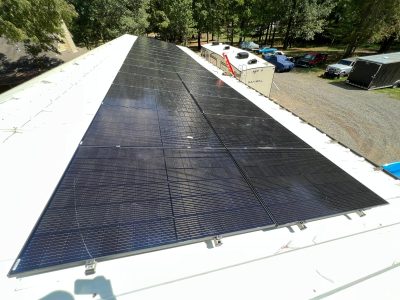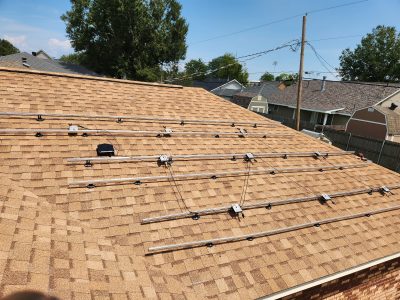Determining whether your roof can support solar panels initially involves analyzing the present condition of the roof, its inclination and direction, and how sunlight it receives. A roof without or with minimal shadow, proper inclination, and sufficient area counts a great deal in solar power potential maximization.
In New Orleans, weather resistance, roof age, and material compatibility all play very important roles in making the decision. By taking all of these considerations into account, you can ensure that your investment in solar panels with Big Easy Roofers will be productive and effective in Louisiana’s humid subtropical environment. Thinking about going solar? Let’s take a look at your roof and see if it’s a good fit—give us a call today.

Deciding whether your roof is solar panel-ready entails assessing several important factors. From installation to maintenance, every element goes into the long-term, efficient, and affordable investment that solar offers.
In the Northern Hemisphere, south-facing roofs receive maximum sunlight exposure and hence are the ideal candidates for solar roofs. A typical angle of 15 to 40 degrees is preferable for energy production output.
East- and west-exposure roofs can also be fine, although such orientations may get slightly less energy. Having your roof receive direct, consistent sunlight during the midday period is essential to deriving maximum benefit from solar energy.
Although trees will not always directly influence solar generation, shadows produced by nearby trees, buildings, or chimneys can hurt solar performance.
It’s helpful to know how much sun your roof sees during the day. You could use a solar pathfinder to ascertain possible obstructions and the silhouetted effect they present to energy production, or have a professional inspect your roof.
For solar projects, roofing materials such as asphalt shingles and metal are ideal. Metal, asphalt, and concrete tiles supply a firm foundation to attach installing systems. Older roofs—generally 10-15 years or older—might require an inspection or replacement to prevent any structural problems.
Pitched roofs tend to be more suitable for solar panels because of their natural slopes, but flat roofs can be accommodated using tilt racks to position them correctly. The flat roofs will require additional equipment, which may contribute to expenses.
A typical residential solar system requires 400-600 square feet of available roof area. Taking into account layout obstructions, shaded areas, or oddly shaped roofs will limit where solar panels can be placed, so a full design plan must be made.

Installing solar panels not only improves your home in an eco-friendly manner! Secondly, it is a structural decision that defines the shape and functionality of your roof. An extensive review is necessary to ensure your investment is running at its optimal level of performance for years to come.
Roof strength is the key to any successful installation of solar panels. Solar panels, mounts, and other fixtures add a new “dead load” to your roof. They can range between 2 and 4 lbs/sq ft, depending upon the system.
Old roofs, especially older wood shingles or other veteran materials, could have to be reinforced to allow for this weight. Live loads, such as wind and possibly snow load, are considered as well.
The right load dispersion is especially important on flat roofs, often found on commercial buildings throughout New Orleans. That way, you prevent sagging or damage in the future.
Typical problems might be the sagging rafters, the water-damaged spot, or a termite or rot-weakened section. A thorough inspection before installation should catch these red flags. Additional repairs or reinforcements might be required to bring any structural issues up to the applicable safety and building code standards, like the IRC or IBC, for example.
In areas such as Covington and Mandeville, where routine heavy rain and related humidity and occasional hurricanes prevail, your roof has to endure harsh conditions. Metal roofs, likely preferred for historical strength, or roofs painted with elastomeric paint, which prevent moisture from penetrating a building, have great surfaces for being ready for solar panels.
Preparing your roof for solar panels is a little more involved than just installing the panels and moving on. Without proper planning, it can all come crashing down. A strong edifice, and at times, a deeper investment is required—both literally and metaphorically.
Having a sound roof will benefit your system and make it perform better, as well as ensure the protection of one of your property’s most vital assets. Big Easy Roofers can assist in guiding you on how to get started if you are not exactly sure. Call us today!